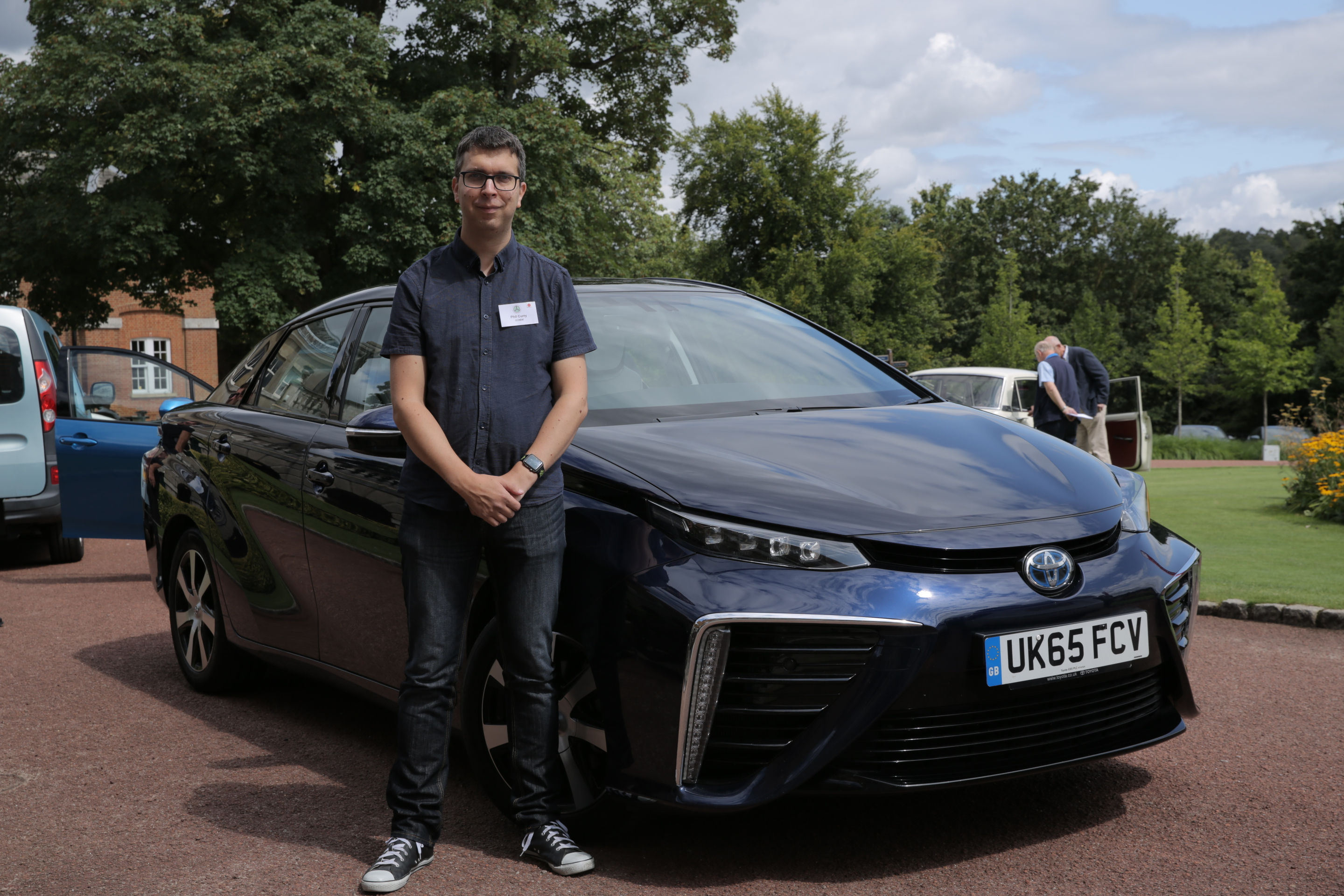Hydrogen on the road – Part 2
27 August 2019

Hydrogen on the road – Part 2
27 August 2019
Following his learning of Toyota's hydrogen systems, Autovista Group journalist Phil Curry takes the company's first production car to be powered by the fuel, the Mirai, out for a drive and finds out how safe the technology is.
Benefits
The Mirai produces zero emissions, as an electric vehicle would, but provides a 300 miles range. In NEDC testing, the vehicle was able to travel 342 miles. Refuelling is the same as a petrol or diesel vehicle, while the car has 154bhp, can travel 0-62mph in 9.6 seconds with a 111mph top speed and delivers instant torque of 335Nm.
Additionally, unlike a battery, the fuel cell has no fixed life. There are no moving parts, and Toyota expects it to outlive the vehicle itself and still be useful afterwards as an electric generator. In terms of servicing, the company recommends a check at 10,000 miles, as there is one component that would need changing, the de-ionising filter. The fuel tanks have a 20-year life or around 900,000 miles.
Safety
There has often been a question of how safe hydrogen is, especially following an explosion at a fuelling station earlier this year.
Jon Hunt, manager of alternative fuels at Toyota GB points out that some sceptics talk about safety, and point to the explosion of the Hindenburg as what can happen in an explosion using the gas. ′You cannot see hydrogen burn, in fact, it has some great safety properties,' he says. ′It is not toxic, it will dissipate virtually immediately, if it is to burn it does so with no radiant heat so it won't set fire to other things around it, and it burns itself out very quickly.
′If you were to have an accident with the vehicle, and hydrogen was to escape, bearing in mind that the tanks themselves are extremely robust, more so than an ordinary fuel tank which would easily spill the fuel, the control systems would release hydrogen in small amounts, in a concentration below flammability levels.
′Even if this were to fail, a tank containing around five kilos of gas would burn itself out in less than a minute. If you were to have the same sort of fire in any fossil fuel vehicle, the fire would last quite a lot longer burn with more intensity and would likely set fire to other things as well. For an EV, a battery fire could last days.
′However, if you had an accident that would set fire to the hydrogen, you would probably have other things to worry about first!'
On the road
 Driving the Mirai is like driving an electric car. There is no background noise, the power delivery is instant, and with no gearbox, the movement is smooth throughout. The only difference is the addition of a ′fuel gauge' within the digital display on the dashboard, which when it was my turn to drive was showing three-quarters full with a range of 180 miles. With careful driving, I was able to cover eight miles while only losing three miles of range – much the same as being careful in any vehicle.
Driving the Mirai is like driving an electric car. There is no background noise, the power delivery is instant, and with no gearbox, the movement is smooth throughout. The only difference is the addition of a ′fuel gauge' within the digital display on the dashboard, which when it was my turn to drive was showing three-quarters full with a range of 180 miles. With careful driving, I was able to cover eight miles while only losing three miles of range – much the same as being careful in any vehicle.
While parked, the car produced a puddle on the floor with the power switched on, as the only thing coming out of the tailpipe was water, the leftover combination of the hydrogen and oxygen.
Personally, looks-wise the Mirai looks a bit too slab-sided, way too much body panel for the small wheels. However, this vehicle is not about looks and style, but to show what hydrogen can actually do in a car. With this in mind, Mirai is a game-changer. It is not the only hydrogen car on the market at present, but it was the first, and is currently being used by a number of institutions, including police forces, chauffeur services, energy companies and research institutions. In total, there are 112 Mirai in the UK, covering around 800,000 miles each year.
Toyota is perhaps the most advanced company developing the technology, with others including Hyundai and Daimler also following suit. It took some time for the Prius, with its hybrid technology, to gain market traction. Once infrastructure continues to increase, hydrogen is certainly the way forward, perhaps more so than electric vehicle technology.